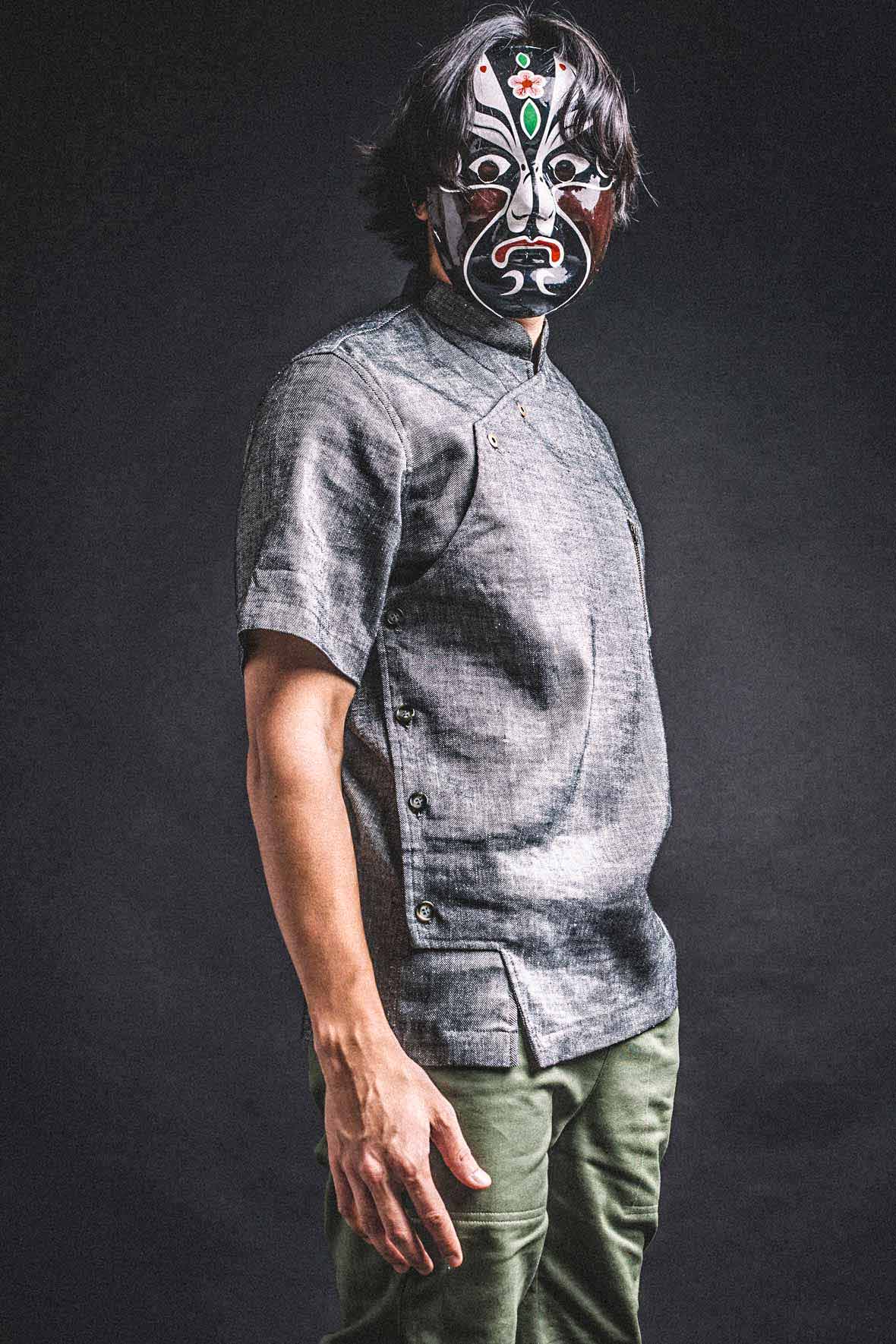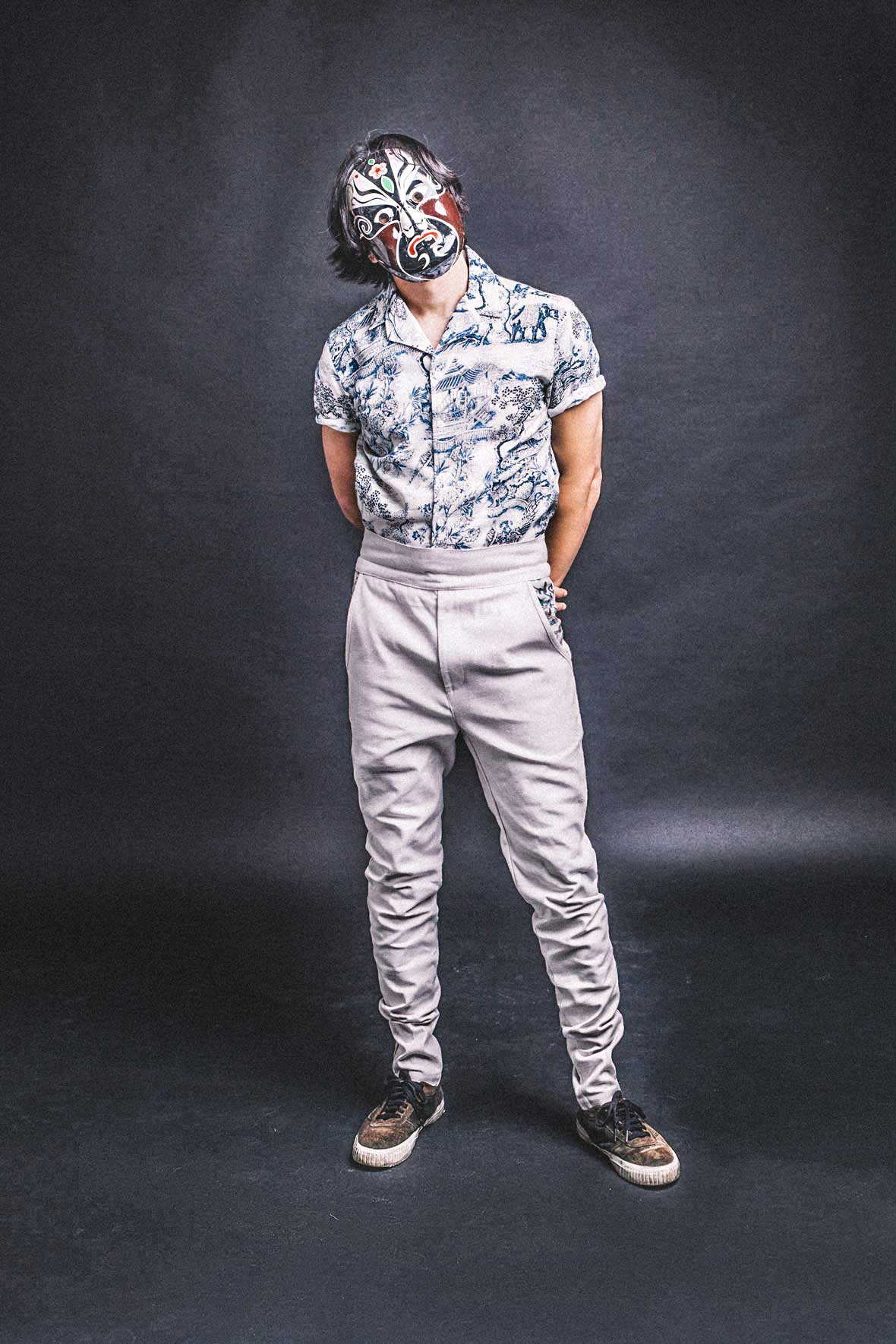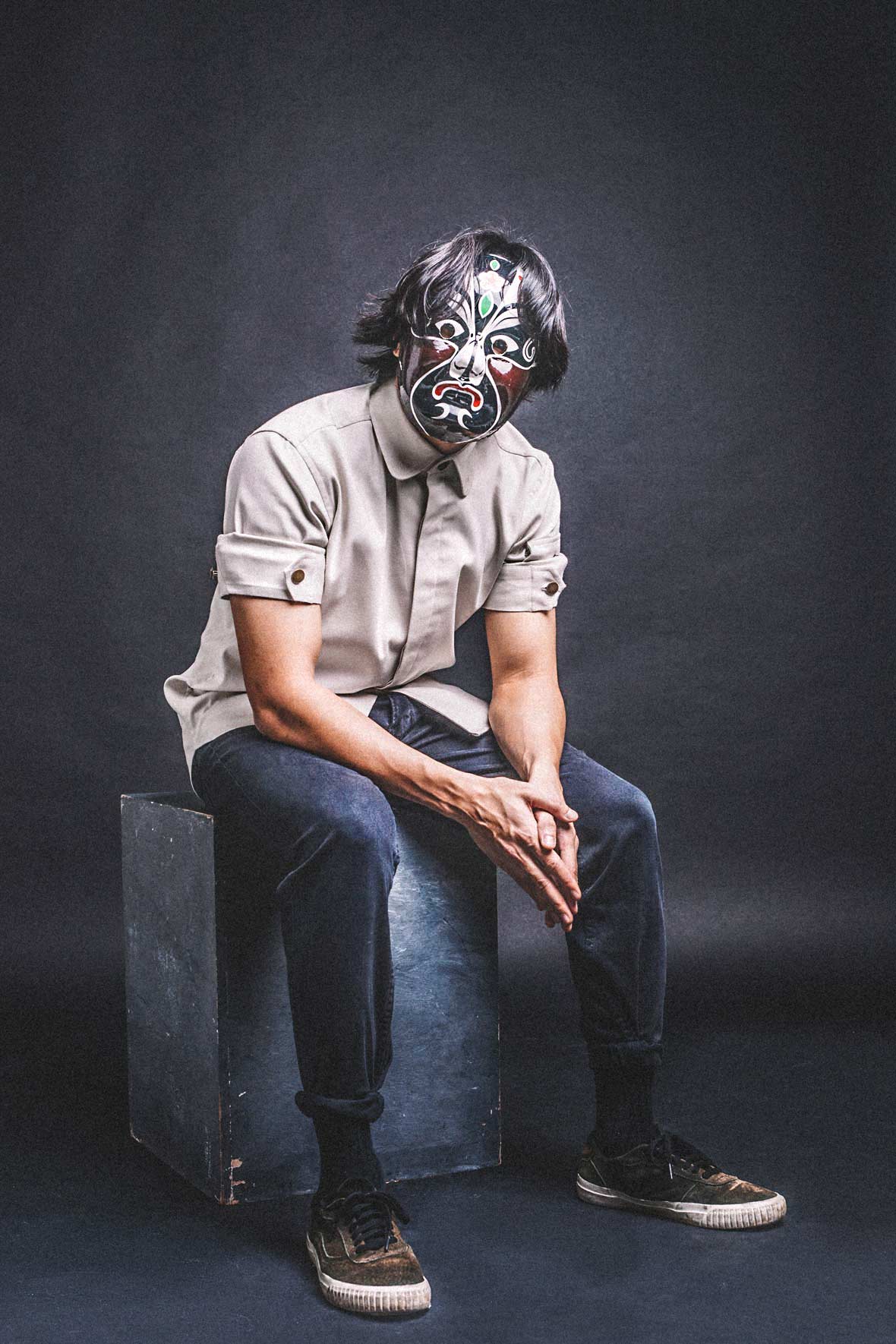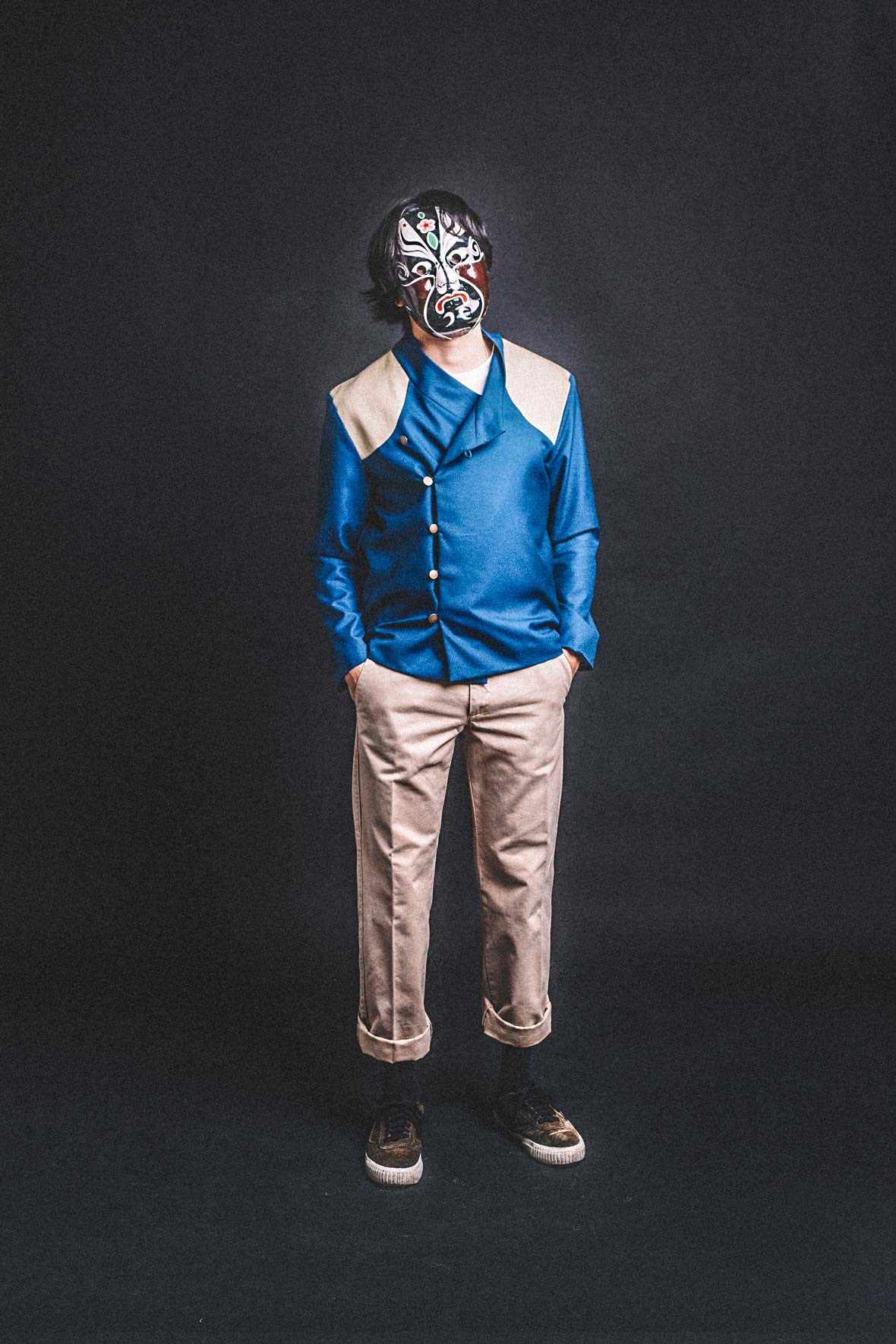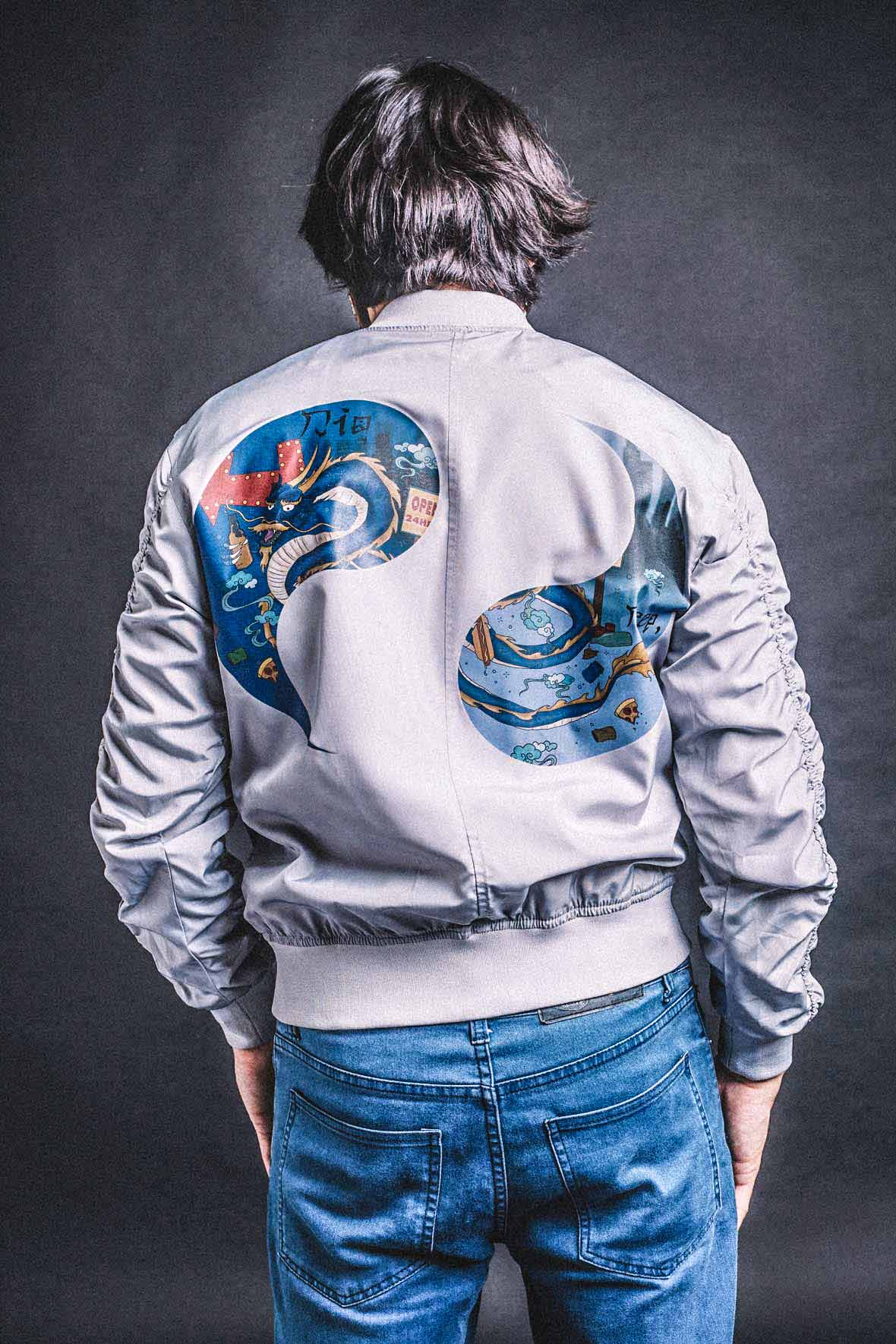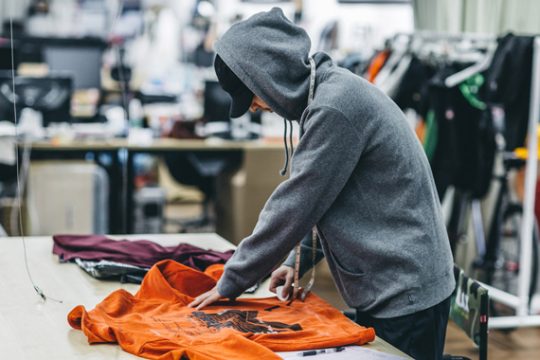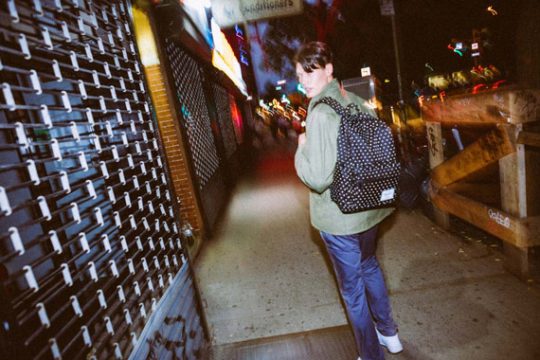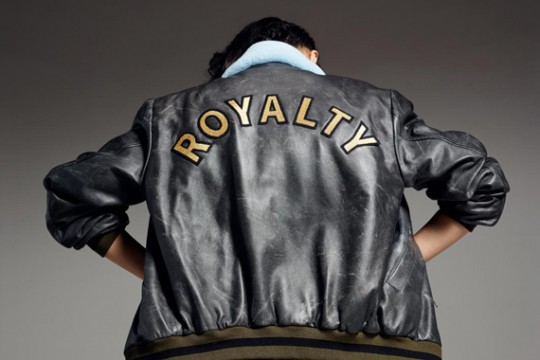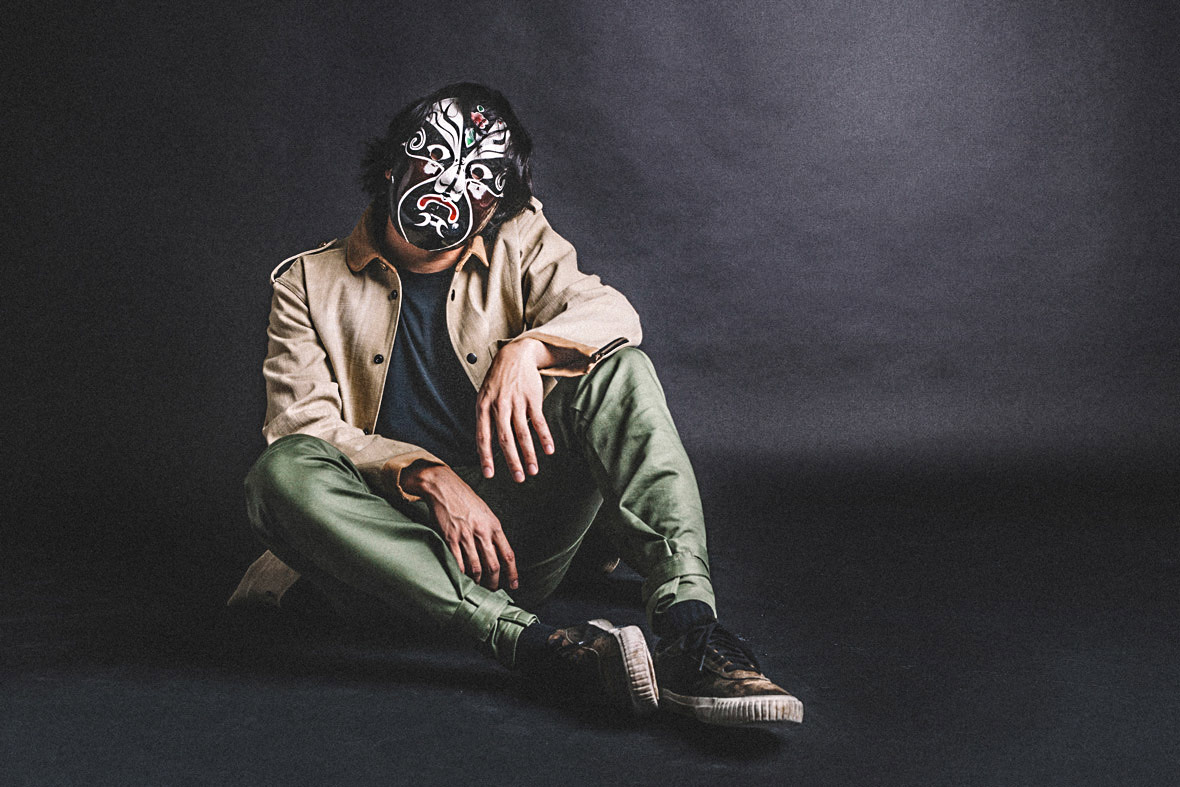
Dig Deep is an independent menswear label based in Singapore, their apparel is designed in and inspired by the East Asian region. Each collection focuses on a particular country within the region and aspires to convey certain elements of each country’s culture. Dig Deep juxtaposes traditional elements with the most rugged aspects of their respective countries to create premium garments for curious-minded people living in this homogeneous generation. Recently, Neocha sat down and talked to Choo, one of the founder of Dig Deep, to find out more about their inspirations and view on streetwear culture in the region.
Dig Deep是一个来自新加坡的独立男装品牌,设计充满东亚风情。Dig Deep的每一季的设计灵感来自东亚地区的不同国家,致力于把不同文化中的传统元素带进他们的设计。Dig Deep把这些传统元素和男装的硬朗相结合,为这个充满好奇心而又有些同质化的这一代人,创作出牛逼的服装。最近新茶和Dig Deep的创始人之一Choo聊了聊他们的设计灵感和对新加坡的潮流文化的看法。
Neocha: Within the context of Singapore, have you faced any difficulties in trying to start an independent fashion label? What are some of the more memorable experiences of starting this label?
Choo: We’ve actually encountered countless issues along the way due to nature of the fashion industry in Singapore. The difficulty of sourcing embellishments and fabrics was definitely one of the most challenging one we’ve had to overcome. By many measures, the local fashion industry is quite small when compared to other industries in Singapore’s economy. This led us to the sourcing of our fabrics and embellishments from more established markets in Japan, China and Vietnam. One of the most interesting things we did in starting Dig Deep, and still continue to do this day, is work closely with our pattern makers. Both ladies of whom are in their late fifties and have been perfecting this art for over the past thirty years. Pattern making is essentially a dying trade in Singapore, a skill that many can pick up with time but only able to master through countless years of experience and practice. Pattern making can be loosely defined as making the shapes for each component (e.g. sleeve, cuff, collar, bodice etc. for a shirt) of a particular type of garment and these shapes will eventually be used to cut the fabric according to the patterns before being sewn together. The pattern makers we work with exercise a great degree of judgement and precision in crafting the patterns according to our sketches, measurements, and inputs through fitting sessions. We actually rely heavily on these increasingly rare artisans to bring Dig Deep’s designs to life.
Neocha:在新加坡的大环境下,创立这样一个独立设计品牌的过程中有遇到什么困难吗?或者有发生什么有趣的事吗?
Choo:因为新加坡时尚产业自身的局限性,导致我们在做这个品牌时遇到了很多困难。目前布料和配件的供应是最大的困难。在很多程度上,本地时尚产业和新加坡其它产业相比规模是很小的,这让我们必须从更成熟的市场寻找供应商,像是日本,中国和越南。在成立Dig Deep以来,最有趣的事就是和我们的服装制版师们一起工作,两位年近六十的女士都有着超过三十年的从业经验。服装制版师在新加坡是一个快要消失的职业,服装制版也是个简单易学却需要多年经验和练习才能如火纯青的技术。制版可以简单定义为制作衣服的每个部件形状(如果做件衬衫的话,像是袖子,袖口,领子等等),根据这些形状裁剪出布料,最后进行缝制,我们的样板师根据我们的设计,测量和数据,能够超级精准的制作出我们想要的样板。想要把Dig Deep的设计转化为现实,这些越来越少的匠人使我们不可或缺的。
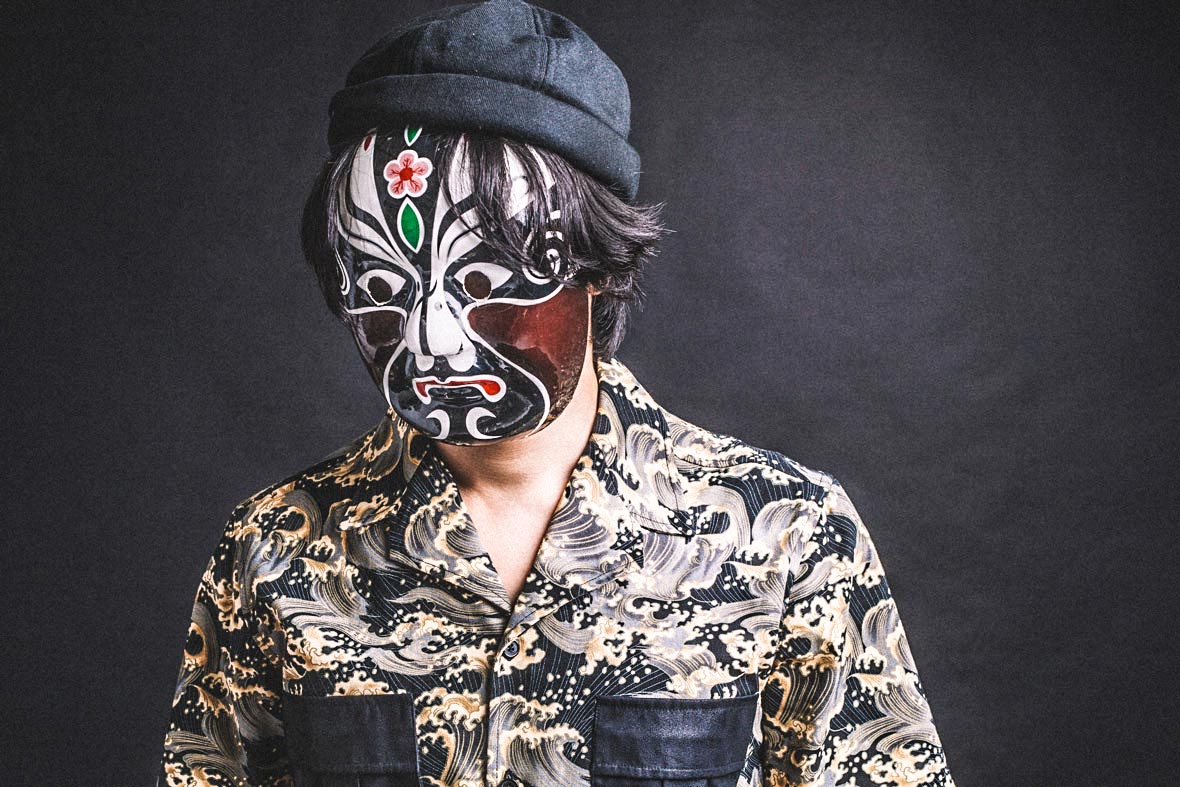
Neocha: Many would agree that Singapore is the financial center of South East Asia, and you come from a financial business background. In a country where it’s possible to have a comfortable career in finance, what led you to abandon this path and dedicate yourself to fashion?
Choo: I would say there weren’t any factors that pushed me to leave the world of finance, but rather I was pulled and drawn into the world of fashion by a number of factors; one of which was definitely the insatiable desire to create. I saw the creation of garments and Dig Deep as an avenue that would allow myself and my team to create a brand and products that hopefully many would be able to relate to. In fashion, the individuality beyond just the garments itself was also something that truly intrigued me. I have always found it very interesting how the same piece of garment could be part of such a disparate impression for two different people wearing it. The styling, the attitude, the age of the individual, their gender, their body structure, their tattoos or the lack thereof are all components that actually give the garments its character. To me, It’s really fascinating how people buy clothes with the mindset that it creates a certain persona or impression of themselves to others, or even to themselves. They’re generally unaware that their interaction with the garment itself is actually what gives the garment its character.
Neocha:我们都知道新加坡是的东南亚金融中心,你也曾在金融界工作。是什么让你放弃了金融业舒适的生活,转而投身时尚界呢?
Choo:其实不能说是什么原因让我离开了金融界,而是时尚界的很多东西深深地吸引了我,其中一个原因就是我很想搞自己的创作。我把服装制作和Dig Deep看做一个渠道,能够让我和我们团队创作一个很多人喜欢的品牌。我喜欢时尚的个性超越了服装自身,同一件衣服两个人穿,也会产生完全不同的效果,我觉得这很有趣。每个人的风格,态度,年龄和性别,甚至身材都能够给一件衣服带来不同的特质。对我来说,我觉得人们买衣服为自己或者他人制造某种印象,但是大部分人没有发现到他们自身与衣服的互动,这也给衣服赋予了他们自身的性格。
Neocha: Most Asian countries have westernized rapidly in the last few decades, and it’s kind of xenophilic on some levels. When you created Dig Deep, did you feel a certain sense of responsibility to make certain cultural and traditional aspects of Asia more accessible to the younger generation?
Choo: Most definitely. There are a number of reasons why we feel this way. One of the main reasons is this perspective that we all hold in the team, which is without knowledge of history, and the cultural, traditional aspects of different parts of Asia, we would not be able to appreciate the present to the fullest extent. It’s only by learning about the journey of how Asia has come to be where it is right now that one is able to understand where the future of Asia lies. The result of the rapid westernization of the East has most definitely brought about some benefits for Asia, but not without its disadvantages, such as the erosion of our own culture, tradition and aesthetics. These things have to be relearned due to the younger generation’s lack of exposure to these elements. The result of which is often an aversion to these seemingly archaic elements, often seen as being outdated and irrelevant to the current generation. What we aim to achieve here at Dig Deep is to generate curiosity and create designs for garments that we feel would be highly relevant to this generation and also serve as a catalyst for one to explore deeper into East Asia’s immensely rich heritage.
Neocha:大部分亚洲国家在过去的几十年里迅速西化,在某些程度上也有些崇洋媚外。当你在创立Dig Deep的时候,你是否觉得有某种责任去把一些亚洲文化和传统,变得更容易被年轻人接受?
Choo:那是肯定的。我们这么觉得是有几个原因,我们团队都认同一个原因就是,我们不会对今天拥有的一切心存感激,如果我们对亚洲的文化,历史和传统一无所知,只有了解过去,才能展望未来。迅速的西化的确给亚洲带来了一些好处,但是也带来了很多负面的东西,像是对于文化,传统和美学的侵蚀。这些我们都要重新去学习,也因为年轻人对这些缺乏了解,导致他们对这些看上去有些“陈旧”的东西产生厌倦,认为是过时的,或者跟这一代人没有什么关系的。我们想要做的就是让Dig Deep能够激发年轻人的好奇心,创作出现代人喜欢的服装,也希望能成为探索深厚东亚传统文化的一剂催化剂。
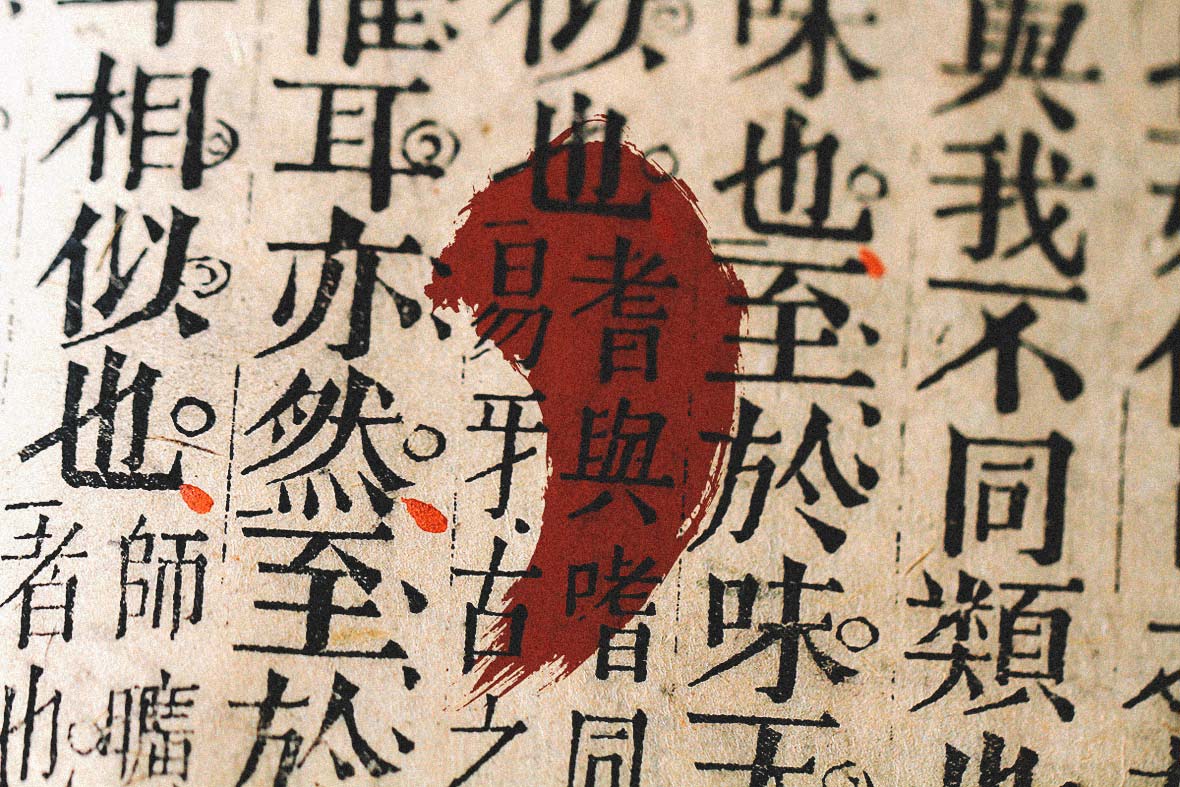
Neocha: How did all the minds behind Dig Deep meet and get together to start the brand?
Choo: A good friend of mine and I were actually having a conversation, about a year and half back, talking about how we felt that much of what we wore in both formal and casual settings was predominantly, or in most cases, entirely Western by nature. We then went on to speak about how wearing our traditional outfits was essentially left for rare occasions and we imagined how people would react if we wore it on a day-by-day basis; we envisioned most people might find it quite odd, and we’d most likely be ridiculed by some, which really got us thinking why that was the case. It became quite clear to us that the economic and political dominance of the West over the last few centuries have permanently altered our perception of our own culture, traditions, and arts, to the point that most of us have developed a sense of aesthetics or normalcy in dressing in a style that’s aligned with Western cultures. We felt that the underappreciation of the arts and culture in the Asian region was less a result of inferiority and more related to an underexposure of Asian elements. Thus, in order for Eastern aesthetics to be considered “normal” and “pleasing to the eye,” it needs more exposure. It was through this conversation that Dig Deep was manifested. We noticed the absence of an Asian-inspired high street brand in the global fashion scene and felt strongly there was definitely room for a number of Asia-inspired brands such as visvim and the up-and-rising IISE to appeal to the global audience, in what has become a rather homogenous environment for high street fashion. It is our hope that Dig Deep, along with other Asia-inspired labels, will be able to bring about a refreshing perspective on high street fashion.
Neocha:Dig Deep现在的主创们是怎么走到一起的?
Choo:大约一年半前,我和我一哥们在聊天,我们都觉得我们平时穿的正装和休闲服都太西方了。继续聊到我们只在一些节日的时候才会穿一些的传统服饰,如果平时也穿这些,别人会怎么看,我们猜别人肯定觉得很奇怪,甚至会被嘲笑。这让我们去思考为什么会变成这样,这显然是西方在过去几个世纪经济上和政治上的统治对改变了我们对自我文化,传统,艺术的认知。以至于我们穿衣风格也被西化了。我们觉得对亚洲文化,艺术的忽视,并非因为自卑,只是缺少对传统文化的推广。因此,为了让东方审美变成“正常的” “好看的”,这都需要对其更多的推广。自那时起,创立Dig Deep的想法就出现了。我们发现在国际时尚界缺少亚洲风格的高街时尚品牌,除了visvim和上升很快的IISE之外,还是有很多发展空间的。我们希望Dig Deep能够和其他亚洲风格的品牌一起给高街时尚带来一股新风。
Neocha: You guys insist on all-original designs, and there are many interesting details in each single one of your creations. What are some reoccurring concepts you try to incorporate when designing an outfit?
Choo: One of the concepts we constantly explore from collection to collection is the reinterpretation of certain iconic traditional elements and how we are able to respectfully transform and incorporate these elements into a particular garment, but in a unique and refreshing way. For example, our first official collection Dragon in the Concrete Jungle explored one of the legends of the East, the late Bruce Lee. We were particularly fascinated with Bruce Lee’s final film appearance before his passing, the 1973 classic Enter the Dragon. In that film, Bruce Lee can be seen wearing a particular type of pants in several iconic scenes. We saw the incredible structure and silhouette of the pants, which was extremely flattering to the male body; being slim at the waist, with strength around the thigh areas, before it’s tapered down near the ankle region, allowing it to elongates the legs. We adopted a very similar structure to our pants and not only that, the cloth used in securing the ankle regions as seen in the film was reimagined. What we created was essentially Bruce Lee’s pants. In the early design phase, we will also try to understand the functionality and reasoning behind why a particular traditional East Asian attire is the way it is, the reasons behind how the aesthetics of that attire has come to be. In our upcoming collection based around Japan, we researched extensively on a couple of facets of Japanese culture, one of them being the attire worn in the art of yabusame, a type of mounted archery in traditional Japanese culture that originated in the Kamakura period.
Neocha:你们坚持原创设计,你们的很多设计中有很多有趣的小细节。当你们在设计一件衣服时,有什么你们很看重的理念吗?
Choo:其中一个理念,在我们每一季的设计中都在一直探索的就是,用一种新鲜且独特的方式,把一些标志性的传统元素转化和融入我们的设计中。举个例子,我们的第一季《Dragon in the Concrete Jungle》灵感来自东方传奇李小龙。在他离世前的最后一部电影,1973年的《龙争虎斗》中,在很多标志性的场景中李小龙都穿着一种很独特的裤子。我们能发现它的剪裁其实是很衬托男性身材的,在腰部的地方收窄,大腿部分相对宽松,最后在脚踝部分收窄,使其更显腿部的修长。我们把这种结构带到我们裤型设计中,在此之上,又重新设计了脚踝部分的设计,使我们真正意义上做了一条“李小龙”裤。在设计的初期,为了理解为什么设计成这样,我们努力去研究和学习亚洲传统服饰设计中独特的功能性。我们下一季的灵感主要来自日本,深入研究了日本文化的几个方面,其中一个就是在流镝马这个起源于镰仓时期的传统马上射箭项目时穿着的服饰。
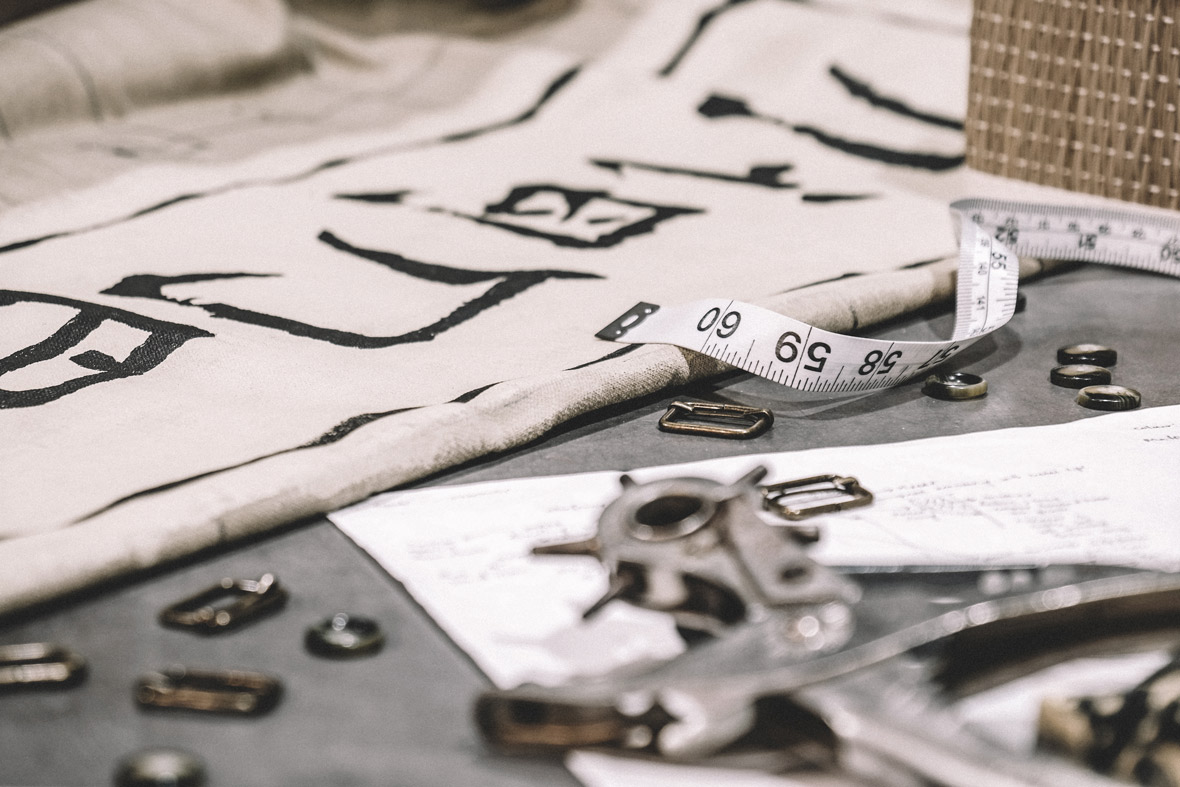
Neocha: Many brands are starting to create more Asia-inspired apparel, and most of them keep it rather traditional, what would you say makes Dig Deep different from the rest?
Choo: There are a number of factors which set Dig Deep apart from the rest and chief amongst these is in our view, our perspective on East Asia which stems from the dynamic nature of our team. The heritage and influences of our team is quite wide ranging. On our team, we have Chinese individuals who have grown up in westernized societies, such as Melbourne and Singapore; a Eurasian whose heritage is part Polish and part Chinese, but whose nationality is American; and also a Shanghai native who has spent a large amount of time in Singapore. This diverse dynamism within the team allows for Dig Deep to have a highly varied and nuanced view of East Asia and affects how we interpret different elements of East Asia. This has a direct impact on the brand and all of our designs. Our individual opinions and perspectives are forced to interact collectively and the result of which are designs that stand apart. On the more tangible side of things, we place a lot of emphasis on the quality of our fabrics and embellishments along with the workmanship behind putting each garment together. We never compromise on the smallest of details for each garment. Every piece of garment is handmade, which allows us certain types of finishes and quality that would not be possible with machines.
Neocha:现在很多品牌都在做亚洲风格的服装,大部分都是尽量保留传统的风格,和这些品牌相比,Dig Deep有什么不同?
Choo:我认为,在几个方面Dig Deep与其它品牌不同,我们对东亚文化独特的理解,源于我们团队对自身文化和传统的影响。在我们团队中,有在墨尔本和新加坡这样西方社会长大的华人,一个波兰和华人的美籍混血儿,以及一个常年生活在新加坡的上海人。这样一个充满多样性和活力的团队让Dig Deep对东亚文化有着多样且细致的观察,能够更好地融合不同的东亚文化元素,这对我们品牌和设计有着直接的影响。我们每个人不同的想法和观点在一起产生化学反应,使我们的设计与众不同。在一些更实际的方面,我们强调用料的质量和缝制的工艺。我们也从不在任何的小细节做出妥协,花大量时间调研,只跟行业里最成熟的供应商合作,制作最高标准,耐用的服饰。不仅如此,每一件衣服都是手工制作,这让我们的服装达到了很多机器无法完成的质量。
Neocha: Traditional East Asian attires have a very unique look compared with traditional attire in other regions. What is your take on the aesthetics of traditional East Asian attire?
Choo: One of the major differences for traditional East Asian attire compared with traditional attire of other regions would most definitely be the evidence of strong hierarchal elements in traditional East Asian attire. It’s not to say that these elements aren’t present in the traditional attire of other regions, but the difference is really in how the hierarchal elements are expressed. In traditional East Asian attire, the aesthetics for royalty and higher ranking members of society revolved around mythological creatures, in addition to rich colours and embellishments. The unique look of traditional attire in East Asia can also be attributed partly to the environmental conditions of the region where seasons play a large role in what people used to wear to protect themselves against the environment. The iconic layering often seen in East Asian attire was mostly due the harsh winters in certain areas of East Asia and though it served a functional purpose, it has also become one of the more prominent features of East Asian aesthetics in the traditional garments. However, we are very often very cautious in generalising traditional East Asian attire under one category, as the differences from country to country, even within a country itself from region to region, or the different time periods have spawned numerous looks within East Asia. It is this dynamism within the East Asia region that we at Dig Deep, truly revel in.
Neocha:东亚传统服饰和其它地区的传统服饰相比是非常独一无二的。你对东亚传统服饰的独特美学有着什么样的理解?
Choo:东亚传统服饰与其它地区的传统服饰相比,最大的不同之一就是历史承载的深厚文化底蕴。这并非说其它地区的传统服饰不具备这些,而是东亚传统服饰有着独一无二的表达方式。在传统东亚服饰里,对于皇室或者贵族的服装设计,是围绕着神话中的麒麟异兽展开的,而且有着丰富的色彩和装饰。东亚传统服饰的独特美感一部分也是由自然环境决定的,这包括四季的变化,以及人与自然的对抗。其标志性的多层次穿法,也是源于东亚部分地区寒冷的严冬,而且能够因地适宜,这也成为东亚美学中最突出的特点之一。所以我们在把所以东亚传统服饰归为一个类时非常谨慎,因为不同国家,甚至是一个国家的不同地区,不同时期,都有着很多不同的着装风格。就是东亚地区这种多样性让我们Dig Deep十分地着迷。
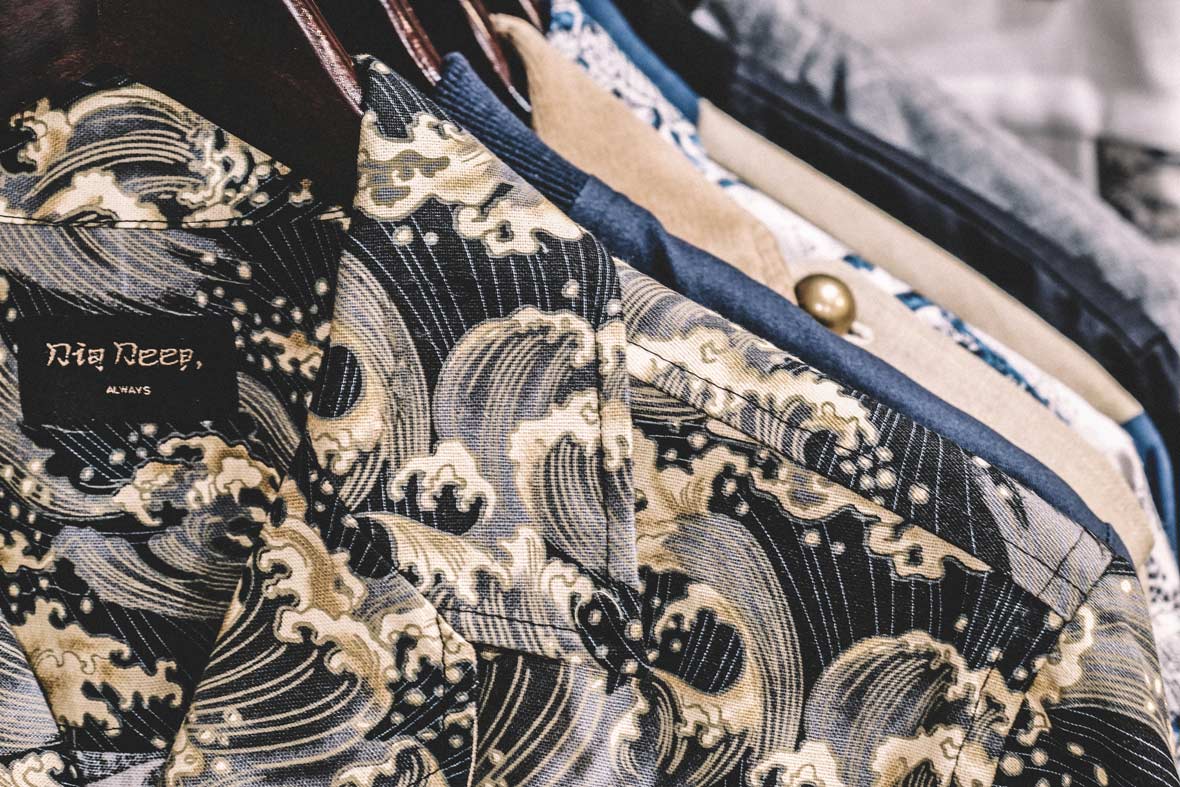
Website: digdeepalways.com
Facebook: ~/digdeepalways
Instagram: @digdeepalways
Contributor: George Liu Zhen

